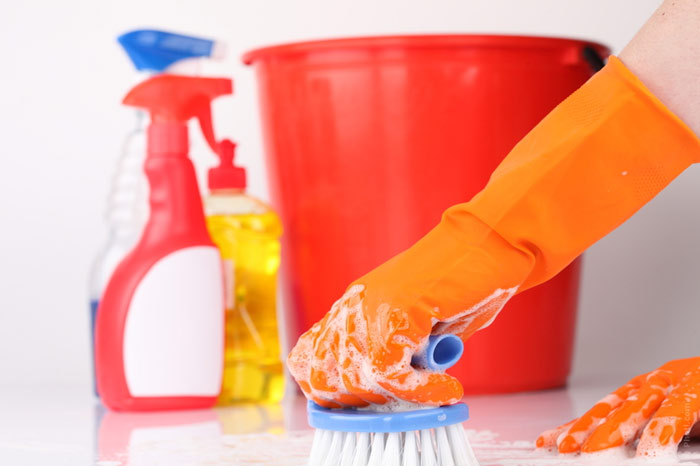Kaizen is a practice that was invented at Toyota factories to bring the manufacturing processes to perfection, involving a minimum of funds for the organization of production. This is how the principles of having no large warehouses, permanent quality control at every stage of production, monitoring the process to eliminate flaws etc. were formulated. One should also mention the 5S system, which usually begins with the study and implementation of the kaizen system.

5S: sort, set in order, shine, standardize, and sustain are the principles of the perfect job.
We have as many occupations at home as at work, so why not follow the useful tips for personal purposes? 5S is sometimes perceived only as mandatory cleaning of the work area at the end of the working day, and therefore the results cannot be seen. What is the point of customizing the work area and arranging the things if they are inconvenient to use? A simple cleaning will not help you assemble a vehicle, after all.
5S is a way of setting the workplace in order for the effective performance of the functions.
According to the Kaizen principles, cleaning is expected to give definite results. You should obtain more space, daily activities will be easier to maintain, and cleaning the house will become a natural habit. Kaizen means endless pursuit of perfection, so do not expect that your home will shine after a general cleaning. Kaizen is introduced gradually and requires time.
The purpose of cleaning is not to just clean. The main task is to create a space in your flat or in your home, which will be convenient and easy to clean. To do this, you do not need a lot. However, you should think a lot. Your decisions will influence the speed and comfort of your cleaning.
The tools you need to prepare for cleaning: colored stickers (they will serve as a kanban – an icon marking some object), enthusiasm and willingness to change the usual order. Let us move to the 5S system.
1. Sort
This is the clear division of the things into necessary and unnecessary ones; you need to quickly get rid of the latter things.
How to do it? First, you need to leave some space in the middle of the room, where you will temporarily put the things you have no place for. Then define the zone, which you will start sorting. Be sure to take the position in which you work on the same spot. If it’s a desktop – sit in a chair. If this is a wardrobe – stand up in front of a mirror. If this is the kitchen – stand at the sink or stove. This is the starting point where you will decide how and what to do with these things. Take any object in the hands and answer a few questions:
- Do I really need this item?
- Do I need this thing here?
- How often do I use it?
- When was the last time I took it in my hands?
If the object is needed in this place, it is often used and should be within your hand’s reach. In this case, mark it with a green sticker. Mark the necessary items that are rarely used yellow.
If the object is not needed at this place, take it to where it should be. If you do not know where to send it right now, stick orange and put it in the middle of the room. If you did not take the object in the hands for more than six months, it will receive a red label.
What should you do with the red marks? The best way would be to throw them away. The philosophy of kaizen is incompatible with large reserves, and one of its postulates is reducing storage space. Of course, not everything is so simple. Sometimes the lack of reserves is unprofitable, but we are used to storing old things “just in case”. This may be broken equipment in case it suddenly comes in handy.
Throw away the old things and debris without pity!
Give an honest answer to the question, when you will finish embroidering the pillow, which you started to embroider at school, during the lesson of handicrafts. When will you assemble one working fan out of two broken fans? When will the fashion for a dress like this come again? Now or never. It is enough to throw all the rubbish away for the house to be much cleaner. Finally, keeping a dusty museum in the house is unprofitable: calculate for comparison how much the annual rent of a few square meters in your area is.
2. Set the order or systematize
Necessary items should be stored in such a way that you could quickly find and use them. This is pure ergonomics: only your experience and your practice should be helpful here. When you put the things back in their places, it is important to get rid of the templates that have been fixed in your behavior. If you are used to the chair standing always to the right of the sofa because this is how your parents placed it, think if you should place the chair where it will be more convenient to use.
It is very simple to find out that you have arranged the things in a wrong way. If the same thing is constantly not in its place – it is just not the place for this thing. Your task is to provide all the things with the space where they will be convenient to use. When an object is convenient not only to take, but also to put it back, cleanliness is fixed to automatism.
If the items are used together, keep them close. Closer to the green markers. The yellow markers should be kept away. Getting to any object with the green label should be easy; the line of our movements should be very simple. For example, a box of jewelry fits well on the top shelf, but you will need it every day and you will not want to reach out for the shelf. So, this place is not suitable.
Put similar things into containers. For each drawer, define its purpose. If you keep appliances in some place, do not put documents there. Distribute your documents in different folders. And do not be lazy to sign boxes and folders!
Do not be afraid to spend money on high-quality functional furniture and tools. Good furniture is a half of your success. During the cleaning, you will not be able to immediately change the situation, but you can outline a plan for changes.
Take your time. Kaizen means gradual changes rather than revolutionary ones.
3. Shine: keep the work area clean
Think about the steps that will help to keep the house in order every day. For example, if the distance between the shelves is too long, large piles of things get rumpled. To prevent this from happening, change the distance between the shelves and make it less – you will fit the same number of things there, but they will not be creased. Taking into account the popularity of furniture agencies, this problem is the one you can solve.
If you have a lot of rooms, it makes sense to put the waste basket there. This is how one overcomes apathy: when the papers on the table are not thrown away into garbage, just drop them in the basket under the table, and collect waste from all over the apartment daily.
Identify the sources of waste, dirt and crumbs, and put barriers: find a bed door mat or allocate space for the scoop and brush around the kitchen table, so as not to fetch it from another room every time you want to sweep.
Little things that reduce our work seem an easy way out for the lazy. But even if you’re willing to start washing the floors at any moment, they will save your time.
4. Standardize
The rules of cleaning and cleanliness should be mandatory for all, and successful solutions should be standardized and applied in practice. You are unlikely to hang instructions in the house and collect signatures from all the members of the family under the cleaning schedule. It will be useful, however, to fix the responsibility for each one part of the work orally. Few people like to clean the house. But we are looking for solutions for the lazy.
Standardize the system of incentives: if someone offers a new ergonomic solution, it is necessary to mark this idea with a reward. This method works especially well when it is necessary to stimulate children. Children’s fantasy is the best source of customized solutions, even if it comes to cleaning.
5. Sustain and improve
The principles of the system should become a habit; you should want to make the house better after each cleaning. It makes no sense to sort all the things in the apartment every week, but it is helpful to repeat the spring cleaning with the use of colored labels just once every few months. Include the money to update your furniture and repairs into the budget planning. Draw a layout of things and do not be afraid to change their places. Evaluate the results making pictures before and after.
Kaizen principles are not unique. They are based entirely on common sense and experience. But they are included in a single system, which we all somehow use (or at least try to use).
If you want to clean up the mess on the desktop and see that the cleaning takes a lot of time and effort, you want to drop everything and go back to the old mess. But it is of advantage to analyze the causes of difficulties, put a smaller table or get a special shelf for storing papers. This is how you can improve the workplace as well as change yourself for the better – indefinitely long. This will be the kaizen philosophy in action for you personally.










